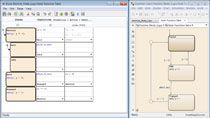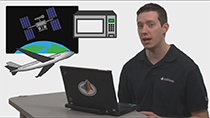How to Create a State Transition Table
State transition tables provide an easy on-ramp for learning Stateflow® and are an ideal solution for simple, process-oriented, sequential state machines. In this “how to” demonstration, follow an example of a quadcopter takeoff that explains the basic components of a state transition table.
Watch to learn:
- What finite state machines are used for
- Why to use state transition tables
- How to build a state transition table
- How to visualize state transition tables in other ways
Published: 22 Apr 2024




